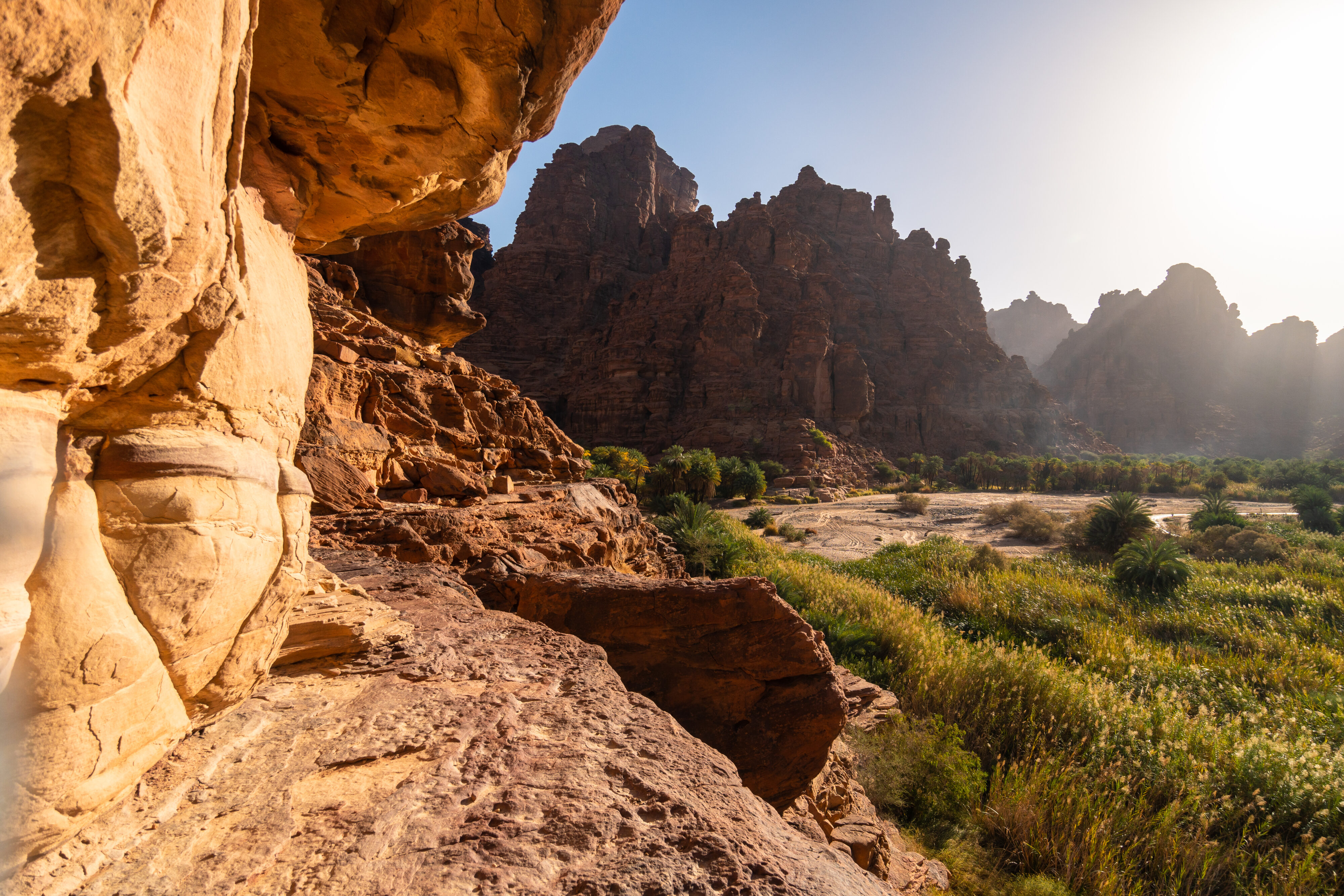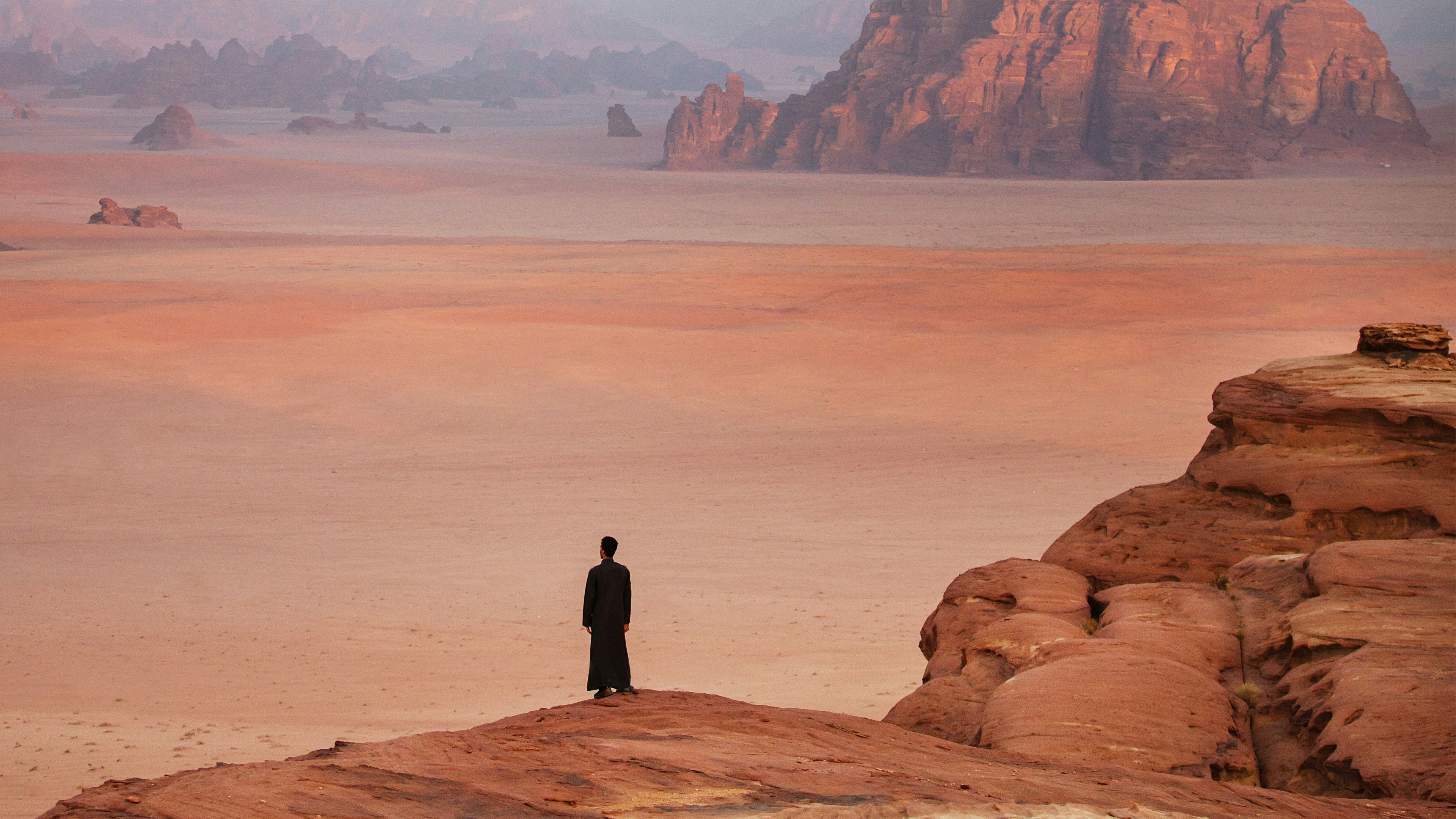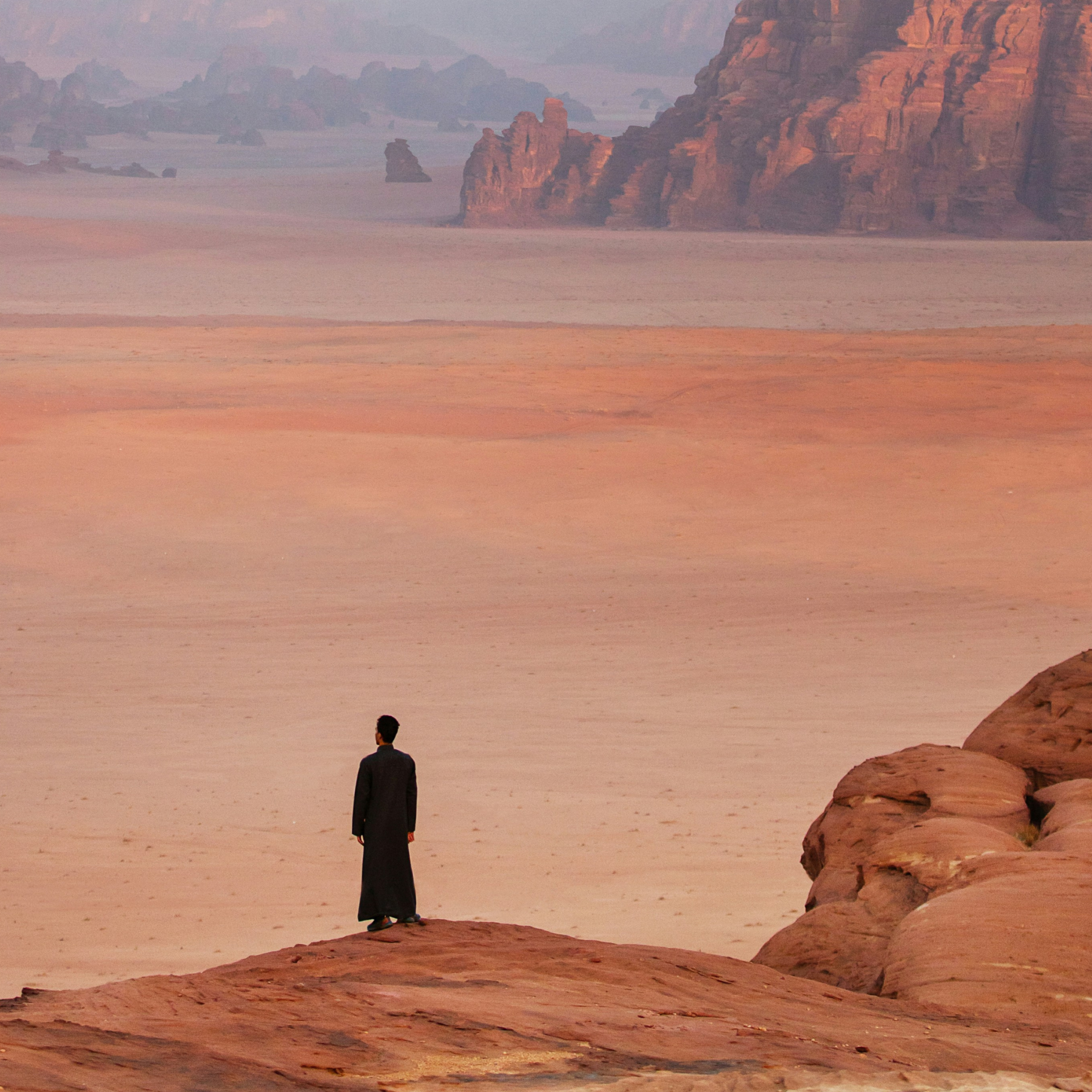In 2017, Saudi Arabia’s Crown Prince Mohamad Bin Salman stepped onstage at the Future Investment Initiative in Riyadh and sold his countrymen a dream. In the next 13 years, he said, the oil-dependent Gulf nation would diversify its economy away from natural gas and become a global leader in artificial intelligence, clean energy and environmentally sustainable urban planning.
Dubbed Vision 2030, central to this plan would be the construction of NEOM: a 26,500 sq. kilometre giga-project in the northwestern corner of the country.
Built in the deserts of Tabuk Province on the coast of the Gulf of Aqaba and the Red Sea, near bordering Egypt and Jordan, NEOM was sold as an entity unto itself: a futuristic utopia of sorts with its own tax laws, labour laws and an autonomous judicial system. Among its offerings would be a dozen tourism destinations geared toward the ultra-wealthy. This includes Epicon, a luxury resort; Sindalah, an island resort and yacht hub; and Trojena, the region’s first and only outdoor skiing destination, which is set to host the 2029 Asian Winter Games.
But that was far from the only selling point. Among its most ambitious promises were the Oxagon, a port city and manufacturing hub to be built on the Red Sea which would be the largest floating structure in the world, and The Line, a planned city-of-the-future, measuring 200 metres wide and 170 kilometres long.
All of this, the Crown Prince said, would require a sizable investment of $500 billion USD and roll out at breakneck speed over the next few years. At the time, he said, via CNBC News, “This place is not for conventional people or conventional companies. This will be a place for the dreamers of the world.”
But eight years later, little has materialized from these dreams.
Almost immediately, costs began to spin out of control. According to an internal audit reported by the Wall Street Journal earlier this year, the project will cost nearly $9 trillion USD (25 times Saudi Arabia’s annual budget), and its end date has been pushed up five decades to 2080. Of all its planned destinations, only the island resort of Sindalah has opened, years late and still under construction.
With 2030 quickly approaching and NEOM hemorrhaging billions, its completion seems increasingly improbable. And these are just the financial costs of the project. In a desperate attempt to make the Crown Prince’s ambitions a reality, NEOM’s investors and developers have inflicted a grievous human cost on tens of thousands of people, individuals for whom Mohamad Bin Salman’s dreams have become a nightmare.
The cost of doing business
Just months before NEOM’s unveiling at the Future Investment Initiative, the Saudi government claimed the title for the entire stretch of land in Tabuk Province. This was followed by years of protests by members of the region’s Indigenous Huwaiti tribe, who feared that NEOM’s creation would mean their forced eviction from lands they had inhabited for centuries.
And in 2020, these fears would come into sharp focus, as the process began to forcibly evict approximately 20,000 Huwaitis from the villages of Tabuk. According to the human rights group ALQST, those who resisted, including by pleading their case on social media and organizing on the ground, were shot or imprisoned with sentences up to 50 years or to death. Everyone else was removed by force or with meager compensation (as little as $4,500 USD).

Meanwhile, to usher along NEOM’s construction, the Saudi government rapidly began to import migrant labourers from places including India, Bangladesh and Nepal, who often arrived into conditions of indentured servitude, forfeiting their passports to their employers and working to the point of exhaustion in the blistering desert heat. According to an investigative documentary by British network ITV released last year, these conditions have led to the deaths of at least 21,000 migrant workers.
This is nothing new for Saudi Arabia, which has relied on migrant labourers for decades under the kafala system, a sponsorship program that binds these workers to their employer (or kafeel), giving them near-total control of their lives and even their ability to leave the country. Today, there are an estimated 13 million migrant workers in Saudi Arabia, 39 per cent of the country’s population. Despite attempts at reforming the kafala system in recent years, enforcement remains negligible and the abuses perpetrated under its name—often illegal under Saudi law—remain rampant.
So, is NEOM worth building?
Of all of NEOM’s half-baked projects, a disproportionate amount of resources have been pooled into the construction of The Line, the jewel in Vision 2030’s proverbial crown. The Line, as planned, is intended to be a smart city, governed by artificial intelligence and entirely powered by renewable energy. When—and if—it is constructed, it will be the densest city in the world, roughly nine times as dense as Manhattan, with a proposed population of 9 million. To move all of these people, high-speed trains will run up and down its 170 kilometres.
As Rafael Prieto-Curiel, a researcher and lecturer at the Complexity Science Hub in Vienna, notes, running trains along that distance would require so many stops that it would never really be able to hit the high speeds it is capable of; and any disruption in service, such as a security incident or fire at one of the stations along the line, would immediately disrupt transit for the entire city. Many of these problems, he says, could be resolved by simply making The Line into a circle “like a cinnamon roll,” which would reduce the average distance that residents would have to travel between two points in the city.
Get the
Three from 3
newsletter
Join our global community of sharp, curious thinkers to receive a carefully curated email of the three most important things to read, see and do this week.
Listen and learn.
Tune into Third Culture Leaders, a podcast hosted by our co-founder and publisher, Muraly Srinarayanathas.
Explore how leaders skillfully navigate multiple cultural landscapes, leveraging their diverse backgrounds to drive innovation and change.
Still, he says, even this would be an improbable project. “To be clear, I am not advocating for that city,” Prieto-Curiel tells 3. “It’s crazy. The location is terrible, there is no water and a lot of heat, and the darkness of being inside a 500-metre tall cement jungle is terrible for many reasons.”
However, despite all of the bad ideas that have come together to create The Line, Prieto-Curiel notes its one saving grace: “They decided, if we’re going to have a city of the future, we need public transport, we need lifts, we need to move masses of people and we cannot have everyone drive their own car. The Line recognizes that the city of the future has to be, somehow, car-free.”
Such a city might still be a possibility. Planned city projects with a focus on sustainability, renewable energy, and ambitious public transport are cropping up all across the globe. Consider the Smart Forest City proposed near Cancun, in Mexico, with 130,000 affordable housing units and millions of trees; or billionaire Marc Lore’s planned city of Telosa in the United States, to be operated under a community endowment with a focus on sustaining public services for its residents as land values grow; or The Orbit, in Innisfil, Ontario, which plans to transform a rural planning town with smart technology. The city of the future might come from anywhere. But it’s hard to believe it will spring from the minds behind NEOM, in the middle of the Saudi desert.

